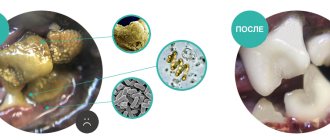Deciding to euthanize your beloved four-legged friend is extremely difficult and painful, but in some situations there is simply no other choice. Despite the lack of alternatives, only a small part of the owners give their consent immediately.
The majority tries to the last to find workarounds, citing the inhumanity and painfulness of the procedure. As a result, postponing the inevitable only prolongs the dog's suffering, while euthanasia provides a real opportunity to alleviate its suffering.
What is euthanasia?
Euthanasia or a happy death is a painless death not only for people, but also for animals. When carried out correctly, the procedure is painless and allows for the development of stress in the pet’s body. Euthanasia of dogs is carried out in 2 stages. At the initial stage, the animal is euthanized in order to suppress the perception of surrounding perception and save it from suffering. Only after the effect of anesthesia is fully achieved is the drug for euthanasia administered.
Euthanasia does not mean murder. To carry out the procedure, it is strictly forbidden to use methods that bring additional suffering to the animal.
Euthanasia is completely humane for a dog. The following methods of killing should not be used in veterinary clinics or at home:
- drowning;
- suffocation;
- use of toxic chemicals;
- exposure to high frequency electric current.
These killing techniques are not humane and are not included in the definition of euthanasia. In addition, they fall under the Russian Federation bill on cruelty to animals.
Euthanasia is used not only to rid animals of serious diseases. The procedure helps reduce the number of stray dogs that actively spread diseases. Among the latter, the most dangerous is rabies. Animal advocates oppose the use of euthanasia for stray dogs, but for now this is the only way to protect domestic animals and people from the spread of serious pathologies.
During euthanasia, the danger to the dog may be the negligence of the doctor or the drug he uses. Euthanasia medications should be prescribed by an experienced veterinarian. As the basis for his decision, the specialist relies on the individual characteristics of the animal: age, gender, presence of concomitant diseases, body weight.
To avoid the development of unpleasant consequences during the procedure, you need to read the instructions, composition and reviews of the proposed drug. Euthanasia is not carried out using potent toxins:
- Ditylin;
- Listenone;
- Adilin and Adilin are super.
When they are administered, the dog quickly develops a painful shock, accompanied by intense muscle cramps. Despite the quick death, the animal will suffer greatly before death.
The procedure should only be performed by the veterinarian who examined the dog. If the drug is administered by a nurse or an unfamiliar specialist, it is recommended to refuse euthanasia in this clinic.
Commonly used drugs
All sleeping pills used for dogs are divided into types. Their choice depends on the situation that requires temporarily euthanizing the animal. Sedatives are classified according to the duration of their effects.
Types of sleeping pills
| View | Purpose | Recommended (titles) |
| Short term | They last no more than half an hour and are recommended for regulating sleep. Also used for medical and hygiene procedures, for transporting and catching dogs. | Introval, Xylanit, Thiopentone, Cyclobarbital |
| Medium action | Prescribed for cramps and severe pain. The drug is often administered to dogs before anesthesia and after surgery. | Barbital sodium, Noxiron, Phenobarbital |
| Long-lasting | Such remedies are rarely resorted to and only in cases where a long surgical procedure is planned, or the animal has sleep disorders | Barbamil, Carbromal, Chloral hydrate, Sodium etaminal |
Any sedative (even short-term) is used only as prescribed by a doctor. Uncontrolled administration of sleeping pills can harm the dog and lead to severe side effects.
Before prescribing such drugs, a specialist must examine the animal to ensure there are no contraindications.
Most chemical sedatives are not recommended if the animal has kidney and liver pathologies.
With the correct dosage, sleeping pills have a calming, analgesic effect. But it should be taken into account that with prolonged use, dogs may develop an addiction to such drugs.
Indications for euthanizing a dog
Euthanasia of dogs is carried out only for medical and social reasons. The first category includes cases where the animal suffers from a serious illness and its chances of survival are almost impossible. In such a situation, the owner of a sick pet should consult a veterinarian, conduct a full diagnosis and obtain a prognosis for the further outcome. If a high probability of death is confirmed, there is a need for euthanasia. It is prohibited to euthanize a healthy dog without indications.
The procedure must be carried out in the following situations:
- for terminally ill pets with diagnoses: malignant neoplasm, inoperable cyst, massive internal bleeding that cannot be treated;
- a large number of injuries with a low probability of recovery;
- for old or weakened dogs;
- in the presence of congenital pathologies that create great discomfort for the pet’s full life;
- infection with a deadly infection for humans: the rabies virus;
- bites of exotic insects, snakes without an antidote.
It is strictly forbidden to use a tranquilizer if a pet with a disability is in good health. The procedure should not be performed if there is a high chance of survival in the presence of a malignant tumor or infectious disease. In the latter case, the pathology should not be dangerous to humans.
Read Method of use and cost of Advantage for dogs
Social indications for euthanasia include aggressive behavior of a dog. Such measures are necessary if the animal cannot be trained and becomes dangerous to others. If a dog attacks an adult or child for no reason, causing severe physical harm, the court decides to euthanize the pet.
Antidepressants: selective serotonin reuptake inhibitors
Tranquilizer inhibitors are indicated for panic disorders, general anxiety, fear of loneliness, compulsive behavior and aggression. But to achieve at least some results in treatment, a long course of therapy is necessary.
In this case, side effects are possible - drowsiness and problems with the functioning of the gastrointestinal tract.
The list of selective inhibitors includes the following drugs used on dogs: Ladose, Prozac, Sarafem, Solax. These are all analogues of the drug known as Fluoxetine.
As in other cases, the course of treatment with inhibitors begins with minimal doses and is gradually increased to the maximum allowable amount. For the treatment of dogs, the start starts at 0.7 mg/kg per day and increases to 1 mg/kg.
How are dogs euthanized in veterinary clinics?
Many owners euthanize their pets at the veterinary clinic to avoid complications and the administration of incorrect dosages of drugs. The procedure is carried out in 2 stages: introduction to deep sleep and injection of a solution for euthanasia. Euthanasia is painless for the dog.
When performing general anesthesia, the owner must be nearby and the pet. His presence will help calm the animal, which will more easily tolerate medical procedures next to the owner. After falling into deep sleep, the veterinarian administers a drug to euthanize the dog. It may take some time for cardiac and respiratory activity to stop. The total duration of the procedure does not exceed 10-15 minutes.
In some cases, additional injection may be required, but this will not affect the animal’s condition in any way. At this point, the dog is asleep and does not respond to the lethal injection. If a pet has the rabies virus, anesthesia is removed remotely so that the doctor can avoid contracting the infection. In such a situation, the duration of the procedure may take from 30 to 45 minutes.
Injections
To perform euthanasia painlessly, veterinarians use euthanasia injections. The procedure is carried out under general anesthesia and the administration of anesthetics. The following drugs are allowed to be used as the latter:
- Pentobarbital to stop the central nervous system, lungs and heart;
- Propofol in the form of a solution for intravenous administration to suppress respiratory function;
- Sodium thiopental for analgesia and hypnotic effect;
- Xylazine is an anesthetic agent that has a muscle relaxant and hypotensive effect;
- Zolarepam to relieve pain;
- intravenous tranquilizer Droperidol, which reduces motor activity and has a calming effect on the animal’s body.
After this, muscle relaxants are administered for euthanasia. To achieve the desired effect use:
- Aredan. A synthetic agent that relieves neuromuscular excitability. The drug inhibits nerve conduction and can be used for general anesthesia.
- Ditilin. Relaxes the diaphragmatic muscle.
- Lidocaine. It has a powerful analgesic effect and relaxes the smooth muscles of internal organs.
- Magnesium sulfate. The drug has an effect on the water-electrolyte balance in the dog’s body. When a high dose is administered intravenously, blood pressure drops, muscle spasms are relieved, and respiratory depression occurs. As a result, the heart stops and the animal dies.
After the administration of some drugs, convulsions may develop. Seizures are a post-mortem side effect of medications. Despite motor activity, the animal’s brain does not function at this moment.
Pills
To release the animal without pain, oral agents are used. They are available in tablets. This is humane for dogs that do not tolerate transport to the clinic well. In such a situation, it is recommended to call a doctor at home or purchase the pills yourself.
At the same time, veterinarians do not use euthanasia pills. active substances are slowly absorbed into the blood, causing only deep sleep. In addition, they have a number of side effects: they can cause muscle spasms, paralysis and convulsions. If necessary, the tablets can be used as a sleeping pill before the injection for euthanasia:
- Sibazon;
- Diazepam;
- Phenazepam;
- Seduxen;
- Relanium.
How much does it cost to euthanize a dog?
The cost of the procedure depends on the weight of the dog. The larger the animal, the more euthanasia costs. This is due to an increase in the required dosage of the drug to euthanize a pet. On average, veterinary clinics quote the following prices:
- the price of 10 kg ranges from 1000 to 2000 rubles;
- from 10 to 20 kg - 2000-3000 rubles;
- about 30 kg of weight require 4,000 rubles;
- to euthanize a pet weighing from 30 to 50 kg, you need 5,000 rubles;
- with a body weight of about 70 kg you need from 6,000 to 7,000 rubles.
Read Real reviews about Superflex supplement for dogs, price and characteristics
Pricing policy may vary depending on the region by 25-35%. When you call a veterinarian to your home, euthanasia costs less. A doctor's visit costs 1,500 rubles. At the same time, veterinary clinics include in the cost of euthanasia the subsequent cremation of the animal and the delivery of its ashes to the owners in an urn. Veterinary clinics offer discounts for complex services, so it is not recommended to order individual services.
Features of application
When choosing a sleeping pill for your pet, be sure to study the instructions and medicinal composition of the drug. In order not to worsen the animal’s condition, we advise you to consult a veterinarian. The doctor will tell you about the likely side effects of the chosen medication and also tell you how they can be eliminated. Ideally, only an experienced veterinarian should choose a sleeping pill; you just have to follow his instructions and under no circumstances increase the dose, as this can lead to tragic consequences.
If your pet, for example, needs a haircut and the journey to the groomer does not take much time, then you should not give sleeping pills. Any use of such medications has a bad effect on the animal, especially on its cardiac activity. In such cases, it is better to use herbal-based products, such as, for example, “Cat Bayun”, “Fitex”, “Stop-stress”, etc.
Remember that sleeping pills are recommended to be given only for complex diseases that are accompanied by pain and insomnia. Sleeping pills for dogs and cats actively act on the first phase of sleep, which speeds up the animal’s fall asleep. If a quick effect on the animal is required, an intramuscular injection is given; in other cases, the use of tablets is recommended.
The use of sleeping pills may cause some side effects in the animal. For example, when barbiturates are abused, addiction occurs, which leads to a new stage of treatment and possible health problems. There is also an individual intolerance of a pet to a particular medicine. Symptoms of intolerance: severe vomiting, increased sleepiness, diarrhea, refusal of favorite food, or the appearance of atypical behavior in the pet. In this case, you must stop taking the drug and take your pet to a veterinarian for a consultation and examination.
How to euthanize a dog painlessly at home?
To euthanize a dog, you yourself need to know the rules of veterinary medicine. This problem is considered by 65% of owners who want to take their dog on its final journey independently in the comfort of a familiar room. At the same time, most experts do not recommend euthanizing an animal at home, because the dosage of potent drugs can be incorrectly calculated. Due to the high dose, an overdose will occur, and the dog will die in agony.
Euthanasia products are sold in veterinary pharmacies. The drugs are sold in several dosage forms:
- in the form of tablets;
- muscle relaxants in the form of a solution;
- soothing drops to slow heart rate;
- injection solutions;
- inhalations, for which the animal must wear a special mask.
If for any reason you have decided to euthanize yourself at home, it is recommended to call any veterinary clinic for a consultation. The doctor will give the exact dose, instructions and necessary recommendations for using the drug.
In the absence of experience, it is prohibited to install IVs or administer euthanasia solutions to a dog intravenously. This can cause severe pain to the pet, and the animal can fall into a coma. If the needle is inserted incorrectly or the integrity of the needle is damaged, the help of a specialist will be necessary.
It is allowed to give the animal drugs in tablet form. To do this, you need to spread the dog's mouth and fix the jaws with one hand, and then place a spoon with the medicine on the root of the tongue. If the animal reflexively spits out part of the tablet, the procedure should not be repeated. In such a situation, the animal swallowed part of the product, which may be enough for euthanasia. In addition, the dog will refuse to take a repeat dose of the expensive drug.
After successfully using the tablet, you should give your pet a drink of water. If the animal is weakened and is not able to lap up the liquid on its own, you should give the dog something to drink using a spoon. In this case, it is necessary to ensure that the pet does not choke. In cases where people refuse fluids, there is no need to force water into them. If vomiting occurs after taking the drug, you must repeat the procedure after 2-6 hours. During this period, the dog should completely calm down.
Veterinarians do not recommend urgent inhalations, because when putting on a mask the animal strongly resists. Before using this method of euthanasia, it is necessary to give the dog a sedative. As soon as the drug takes effect, the pet will not try to rip off the mask. Therefore, you can put it on and carry out the procedure calmly.
Euthanasia using deep anesthesia is allowed. This technique is practiced at home using a special drug - Zoletil. The cost of one bottle reaches 1500-2000 rubles. The medication puts the animal into deep anesthesia, turning off pain receptors. To carry out euthanasia itself, it is necessary to use other medications: 2% injection solution of Lidocaine for intravenous administration or 25% solution of magnesium sulfate.
For painless euthanasia, it is possible to use depolarizing muscle relaxants. At the same time, the use of Listenone and its analogues is prohibited. This drug is administered intramuscularly and quickly spreads along with the blood throughout the body. The drug has a powerful therapeutic effect, paralyzing not only the skeletal, but also the smooth muscles of the organs. As a result, the dog will die from acute respiratory and heart failure, experiencing severe pain.
After euthanasia, the animal must not be buried in the ground. Pet bodies are required by law to be burned. Cremation helps prevent the grave from being destroyed by stray dogs or the spread of disease.
Read Vaccinations for dogs against lichen: effectiveness, method of application and reviews
Non-benzodiazepine tranquilizers
This group of drugs has a milder effect on the dog’s psyche and central nervous system. As a sedative, the medication quickly eliminates anxiety without causing drowsiness.
Expert opinion
Makarenko Svetlana Igorevna
Practicing veterinarian, 15 years of experience.
Helps cope with phobias and is effective in treating urinary incontinence caused by sudden fear.
Buspirone
Veterinarians prescribe only one drug from the group of non-benzodiazepine tranquilizers to dogs - Buspirone (Russian name "Spitomin").
Even small doses of the medicine give a good result, so the product is suitable for calming small breeds.
The treatment is carried out over a course (4-6 weeks) and does not cause addiction or side effects. Reception begins with a small dose of 0.7 mg per kg of body weight twice a day, gradually increasing the amount of the drug to 1 mg/kg per dose.
Temporary euthanasia
Temporary euthanization of an animal is carried out in exceptional cases when the dog’s life is in danger. Anesthesia helps slow down metabolic processes and reduce the activity of the respiratory and cardiovascular systems. In such a situation, the owners have the opportunity to calmly bring the animal to the veterinary clinic for urgent surgery to stop massive bleeding or serious injuries. This is similar to a medically induced coma for a person.
In some cases, temporary euthanasia is necessary to transport an aggressive pet that is capable of biting the doctor.
At the same time, it is not recommended to temporarily euthanize your pet yourself. Incorrect calculation of the dosage of the drug can lead to death. To carry out the procedure, sedatives are used, which help to temporarily calm the animal, relieve muscle spasms and reduce heartbeat.
Precautionary measures
All sleeping pills are strong and can cause side effects. They should not be used without a doctor's prescription. The medicine is given to the pet strictly as directed and the degree of exposure is monitored.
Expert opinion
Makarenko Svetlana Igorevna
Practicing veterinarian, 15 years of experience.
Aggressively agitated dogs should not be given sedatives orally - there is a risk of being bitten. In this case, it is wiser to use a quick-acting injection.
How to decide to say goodbye to a friend?
Putting a pet to sleep is extremely stressful. But there are times when this is necessary. There is no need to consider it a sin and blame yourself for the death of your pet. A dog cannot make its own decisions, so the burden falls on its owner. It is important to remember that the animal will soon die on its own. The owner’s main task is to make his care easier without dooming him to further suffering.
Euthanasia will help relieve your dog of additional pain and stress. Euthanasia should be treated as a routine procedure that benefits the pet.
Psychological aspect
The “other side of the coin” is the psychological side of euthanasia, because the owner literally becomes the “arbiter of fate” and takes full responsibility for taking the life of a little friend. This is very difficult, even if there are objective reasons for such an action.
Even the most seemingly strong person will experience lasting remorse, despite the reasons for euthanasia. However, in most cases there is no choice and you need to try to get through it with minimal stress, even though it is incredibly difficult.
Doctors conditionally divide cat lovers into two types: never have another cat, and help them immediately find a kitten in order to give it your love and make amends for the pain of loss.
Usually, when people decide to have pets, their eyes immediately fall on cats. The most popular cat breeds are: Persian cat, Siamese cat, Maine Coon, Abyssinian, Ragdoll and Sphynx.
Both of these options are correct in their own way, because having once lost your only beloved cat, on the one hand, you want to protect yourself forever from such pain, and on the other, a new animal is not treason or betrayal, but only an attempt to find a friend who will not replace past, but will be beautiful in its own way.
Veterinarians recommend not to dwell on your actions, but to remember your pet alive and cheerful, carrying only warm memories of him.
Important! It is important to force yourself to understand that this decision will only free the cat from suffering and allow him to calmly go to a better world.
How to cope with the loss of a pet?
Many owners suffer greatly after losing a pet. This is normal, because the dog has become more than just an object of leisure. After the death of a friend or family member, there is no need to bottle up your emotions and suffer alone. A funeral ceremony should be held, and there should be a lot of crying and grieving. At the same time, there is no need to fall into apathy and depression. You need to find the strength to let go of the animal and move on.
If a person is not ready to adopt a new dog, you can become a volunteer. Taking care of other animals will help you take your mind off the loss and preserve in your memory joyful moments with your departed friend. Psychological support from other people who have experienced a similar situation helps most effectively.
Tricyclic antidepressants
Serious side effects are possible in dogs after taking medications of this group, so the doctor prescribes them only in special cases - with panic fear with obvious aggression, obsessive disorders and various phobias. But first the animal is examined: it is necessary to make sure that there are no contraindications.
The most commonly used antidepressants in veterinary medicine are Clomicalm (Clomipramine) and Elavil (Amitriptyline).
These products have a cumulative effect, so the first results of treatment will be noticeable after 1.5-2 weeks.
The course begins with a small dose, gradually increasing to the optimal dose, which is determined by a specialist.
During treatment with tranquilizers of this group, blood control is required, because the drugs suppress the hematopoietic processes occurring in the bone marrow.











